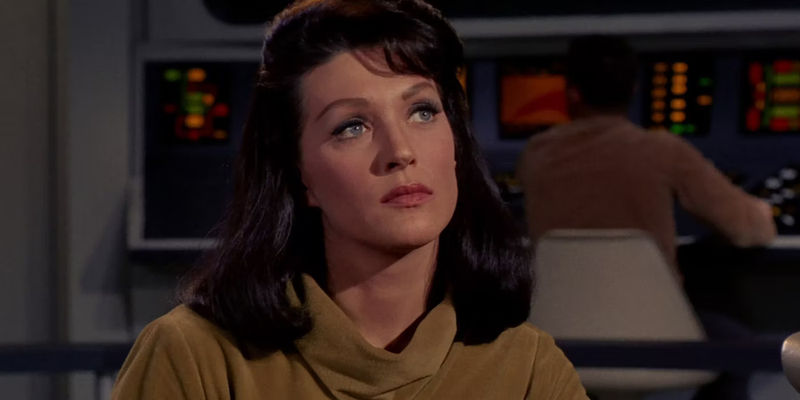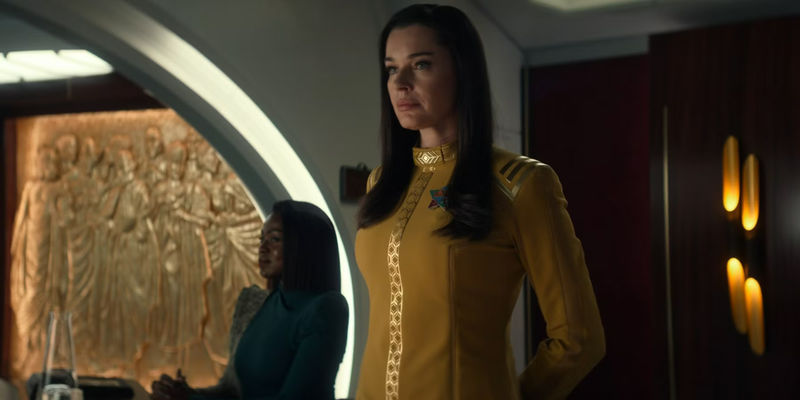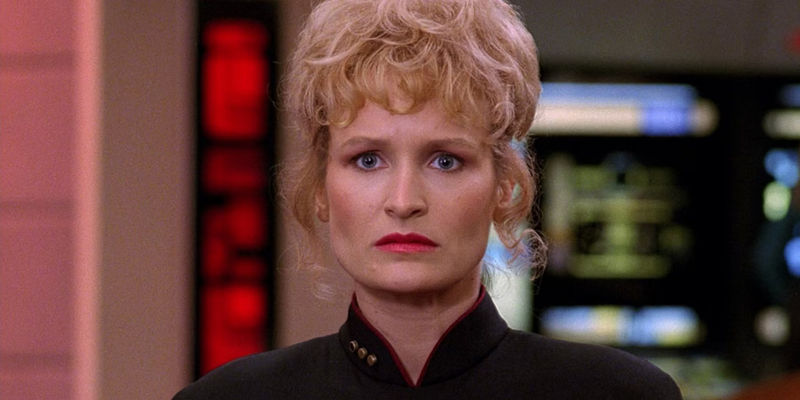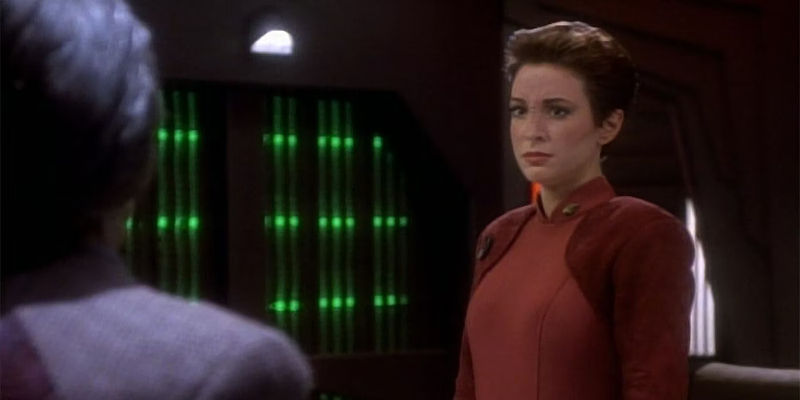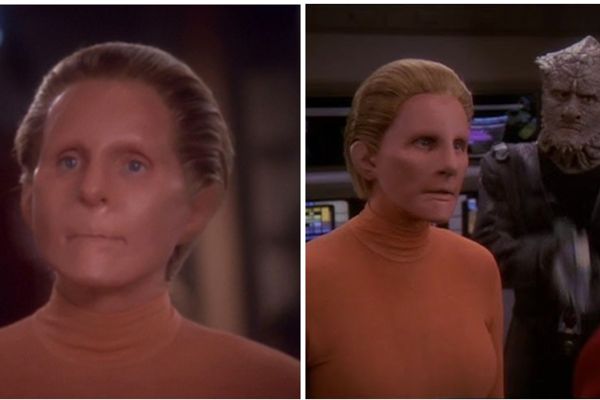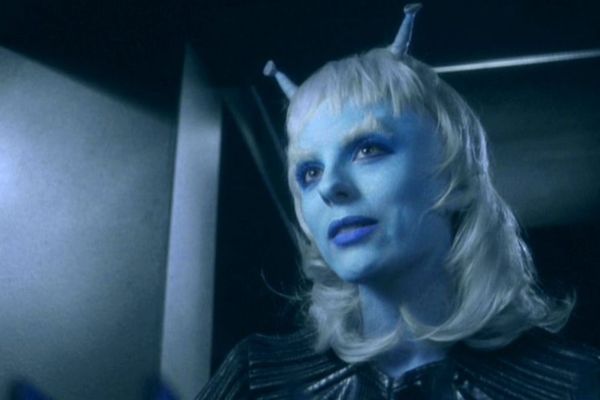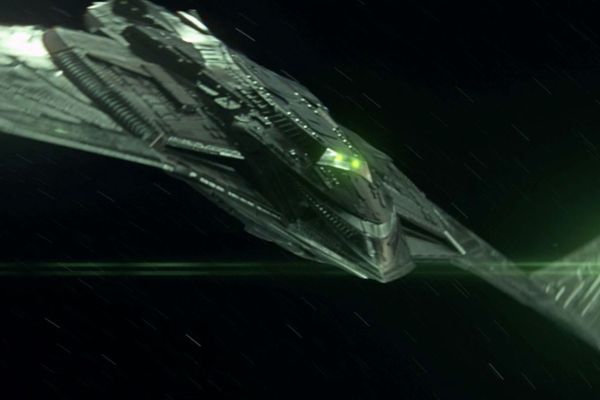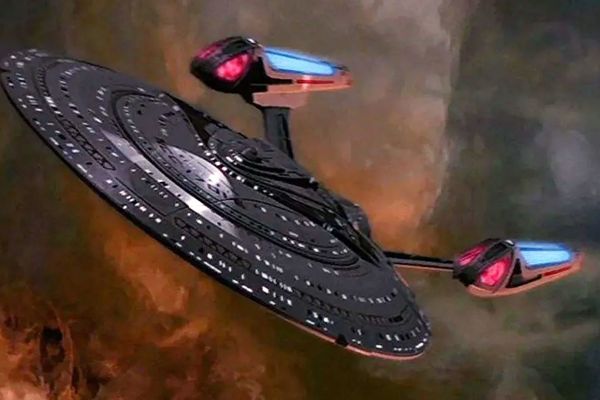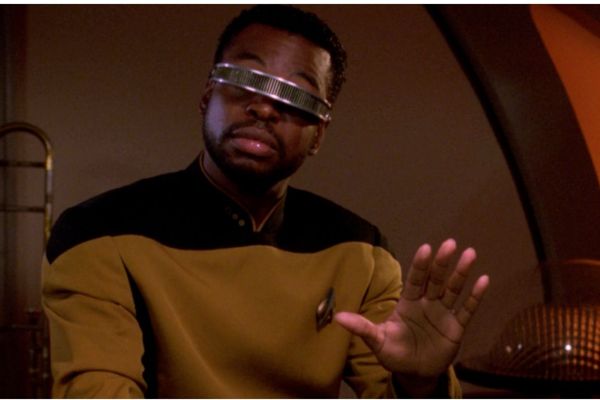
The Evolution of Star Trek's First Female First Officer

Exploring the history and significance of the first female first officer in the Star Trek franchise.
The Original Vision for a Female First Officer
In the early days of Star Trek, Gene Roddenberry envisioned a revolutionary concept for the franchise: a starship with a woman as the First Officer. This groundbreaking idea was first introduced in the original pilot of Star Trek: The Original Series, 'The Cage,' where the Starship Enterprise under Captain Christopher Pike had a female First Officer named Number One, portrayed by Majel Barrett. Number One was characterized as extremely intelligent, logical-minded, and in control of her emotions, setting the stage for the portrayal of similar traits in Leonard Nimoy's iconic character, Spock.
Majel Barrett as Number One on the bridge in Star Trek: TOS "The Cage"
Despite the forward-thinking nature of this concept, it took 32 years for the opportunity to introduce Star Trek's first official female First Officer to come to fruition. This delay sparked anticipation and speculation among fans, eager to witness the realization of Roddenberry's original vision for the franchise.
Una on trial in Star Trek: Strange New Worlds season 2, episode 2
Female First Officers Throughout Star Trek
While the introduction of the first female First Officer was delayed, subsequent iterations of the Star Trek franchise introduced several notable female characters in similar positions of authority. In Star Trek: The Next Generation, the character of Lt. Commander Elizabeth Shelby, portrayed by Elizabeth Dennehy, emerged as a confident and highly skilled officer with ambitions to assume the First Officer position. Shelby's dynamic presence on the USS Enterprise-D showcased the potential for a female officer to serve in a leadership role, a significant step towards fulfilling Roddenberry's original vision.
Elizabeth Dennehy as Commander Shelby in Best of Both Worlds
Additionally, Star Trek: Deep Space Nine featured Major Kira Nerys, who served as Captain Benjamin Sisko's First Officer, albeit not as a Starfleet officer. This nuanced portrayal of female leadership expanded the representation of women in positions of authority within the Star Trek universe, paving the way for further exploration of gender dynamics and leadership roles.
Major Kira confronts Marritza in Star Trek: Deep Space Nine "Duet"
Furthermore, Star Trek: Enterprise introduced Sub-commander T'Pol, who functioned as a de facto First Officer within the Vulcan High Command on the Enterprise NX-01. T'Pol's character exemplified the diversity of leadership roles across different species and organizations within the Star Trek narrative, contributing to a rich tapestry of female characters in positions of influence and command.
T'Pol Enterprise
Significance of Star Trek's First Female First Officer
The introduction of the first official female First Officer in Star Trek holds profound significance within the franchise's history. It represents a pivotal moment in the ongoing evolution of gender representation and equality, reflecting the progressive values that have defined Star Trek since its inception. By bringing to life Gene Roddenberry's original vision of a female First Officer, the franchise celebrates diversity, empowerment, and the capacity for women to occupy influential roles in futuristic and visionary narratives.
Star Trek Discovery Season 1 Commander Michael Burnham
Moreover, the portrayal of female First Officers across different Star Trek series has contributed to a diverse and multifaceted depiction of leadership, showcasing the strength, intellect, and resilience of women in commanding positions. These characters have served as role models and inspirations for audiences, demonstrating the potential for gender equality and representation in science fiction and popular culture.
